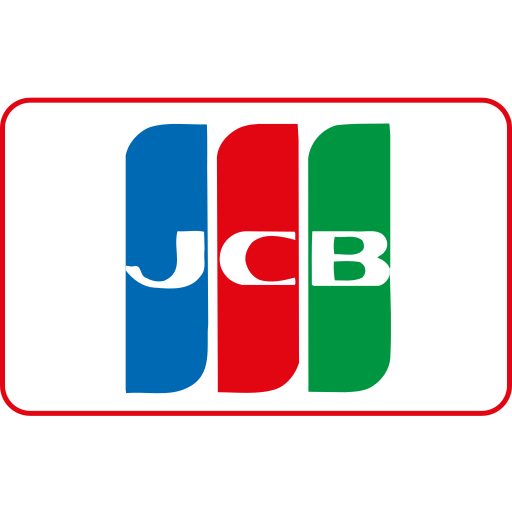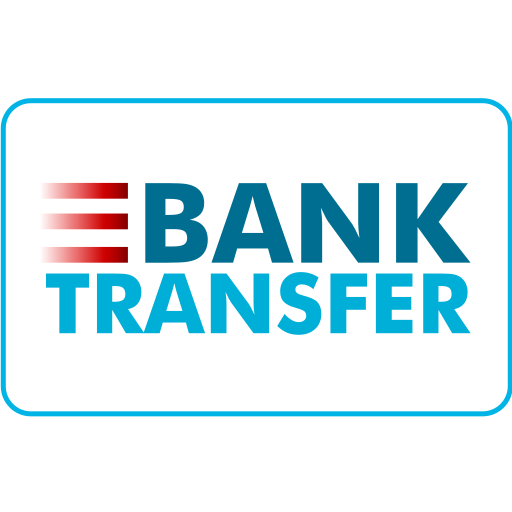
Welcome, early-stage entrepreneurs! In the fast-paced world of startups, every decision you make about your business infrastructure can have a significant impact on your growth and success. One foundational aspect often overlooked until a disaster strikes is data storage and protection. Today, I'll guide you through an essential technology called RAID—what it is, why it matters, and the differences between popular RAID levels such as RAID 1, 5, 6, and 10. By the end of this article, you'll be equipped to make informed decisions on how to safeguard your startup’s valuable data, especially in a competitive ecosystem like Singapore.
What Is RAID? An Entrepreneur’s Guide to Data Storage Redundancy
RAID stands for "Redundant Array of Independent (or Inexpensive) Disks." It’s a method that combines multiple physical hard drives into one logical unit to improve performance, provide data redundancy, or both. Think of RAID as a safety net that keeps your data intact even if one or more hard drives fail—a critical feature for startups that can’t afford downtime or data loss.
Why is RAID relevant to you as an entrepreneur in Singapore? Whether you’re running a fintech startup in the Central Business District or an e-commerce platform from a co-working space in Jurong, your customer data, financial records, and intellectual property are your lifeblood. Losing this data due to hardware failure could mean severe setbacks or even business closure.
Let’s get a bit technical but in a digestible way: Instead of relying on one hard drive that stores all your information (a risky bet), RAID distributes your data across multiple disks. How this distribution happens depends on the RAID level you choose, each designed with different balances of performance, capacity, and fault tolerance.
The Core Benefits of Using RAID for Startups
- Data Redundancy: Protects against disk failures by duplicating or distributing data so that no single disk failure results in data loss.
- Improved Performance: Some RAID levels split (“stripe”) data across disks, allowing faster reads/writes by working in parallel.
- Increased Storage Capacity: Combines multiple disks into one logical volume, which can be larger than individual disks.
- Cost Efficiency: Using several inexpensive disks can deliver similar or better performance and reliability than costly enterprise-grade disks.
However, with great power comes great responsibility—RAID isn’t a backup strategy by itself but rather a resilience layer. I’ve seen startups in Singapore suffer because they relied solely on RAID without implementing proper backups. RAID protects against hardware failure but not against accidental deletion, ransomware, or natural disasters.
A Quick Overview of Popular RAID Levels
There are many RAID configurations, but the most commonly used are RAID 0, 1, 5, 6, and 10. Here’s a high-level comparison:
| RAID Level | Minimum Drives Required | Data Protection | Performance | Storage Efficiency | Use Case |
|---|---|---|---|---|---|
| RAID 0 | 2 | No redundancy | High (striping only) | 100% | Speed-focused, no fault tolerance – generally not recommended for critical startup data |
| RAID 1 | 2 | Mirroring (exact copy) | Good read speed, write same as single disk | 50% | Simple redundancy for small-scale systems or critical boot drives |
| RAID 5 | 3 | Distributed parity (can survive 1 drive failure) | Good read, moderate write speed | (N-1)/N (e.g., with 3 drives = 66%) | Balanced redundancy and efficiency; common in SMBs |
| RAID 6 | 4 | Double distributed parity (can survive 2 drive failures) | Good read, slower write than RAID 5 | (N-2)/N (e.g., with 4 drives = 50%) | Extra fault tolerance for mission-critical applications |
| RAID 10 (1+0) | 4 | Mirroring + striping (can survive multiple failures depending on which drives fail) | High performance (both reads and writes) | 50% | High performance and redundancy; ideal for databases and applications with heavy I/O |
Diving Deeper into Each RAID Level: How They Work and When to Use Them
RAID 0: Striping Without Redundancy - Use with Caution
I once coached a Singapore-based startup whose CTO was excited about maximizing storage and speed with RAID 0. They combined four inexpensive disks into one large virtual drive with excellent read/write speed. Unfortunately, one disk failed after six months, and since RAID 0 offers no redundancy, the entire volume was lost—databases and all. The lesson here is simple: RAID 0 is best for non-critical data like video editing scratch disks but not for your startup's business data.
The Simplicity of RAID 1: Mirroring for Reliability
The beauty of RAID 1 is its simplicity. It copies data identically to two disks. If one fails, the other takes over instantly. I've seen many startups in Singapore choose RAID 1 for their essential systems because it's easy to understand and implement without complex configurations.
The drawback? You essentially halve your storage capacity because both disks contain the same data. For example, if you have two 1TB drives in RAID 1, your usable space remains 1TB. But the peace of mind knowing your data lives simultaneously on two disks is invaluable.
The Popular Choice: RAID 5 Balancing Redundancy and Efficiency
If your startup is ready to invest in at least three drives, RAID 5 is often the go-to choice. It stripes data across disks like RAID 0 but uses parity information distributed among the drives for fault tolerance. Parity is a type of error-correcting code enabling data reconstruction if one disk fails.
I remember helping a Singaporean e-commerce startup set up a RAID 5 array with four 2TB drives. The setup gave them about 6TB of usable storage instead of the full 8TB (because one drive's worth is parity). This configuration allowed them to survive a single disk failure without losing any data or service uptime—a critical feature for their online platform during peak sales seasons.
The Extra Protection of RAID 6: When Two Failures Can't Stop You
Missions that cannot afford downtime even if two disks fail at once benefit from RAID 6. It works similarly to RAID 5 but includes double distributed parity, allowing the array to survive failure of up to two drives simultaneously.
This level is slightly slower on writes due to the extra parity calculations but offers unparalleled fault tolerance at an affordable cost compared to expensive backups. Startups handling sensitive client information or heavy financial transactions often opt for RAID 6.
The Best of Both Worlds: RAID 10 (Mirroring + Striping)
This hybrid combines the speed advantage of striping (RAID 0) with the redundancy of mirroring (RAID 1). It requires a minimum of four drives and mirrors two striped sets.
I recommend RAID 10 for startups in Singapore specializing in high-transaction databases or real-time analytics applications where both performance and redundancy cannot be compromised. You get faster reads and writes than RAID 5 or 6, plus resilience against multiple simultaneous disk failures—but at a cost of only 50% usable capacity.
Selecting the Right RAID Level for Your Startup: Factors to Consider
- Your Budget: In Singapore dollars (SGD), adding more hard drives increases upfront costs but can save money in recovery expenses later. For example, four enterprise-class 4TB HDDs can cost approximately SGD 600–800 total.
- Your Storage Needs: Do you need maximum capacity or maximum protection? Calculate usable space after factoring in redundancy overhead. For example, RAID 5 with five drives yields roughly 80% usable space; RAID 10 only 50%.
- Your Performance Requirements: Applications like video streaming may prioritize speed (lean toward RAID 10); archival storage may prioritize cost-efficiency and redundancy (lean toward RAID 5 or 6).
- Your Risk Tolerance:If your startup can’t tolerate downtime or data loss at all—say, a Singapore fintech platform handling customer transactions—opt for RAID 6 or RAID 10 with robust backups.
- Your Technical Expertise:If internal tech resources are limited, simpler configurations like RAID 1 might be better while building skills gradually.
The Cost Implications of Setting Up RAID for Startups in Singapore
An often-asked question is: "How much will it cost me to implement RAID?" The answer depends on the number and type of drives and whether you’re using hardware RAID controllers or software solutions.
A rough cost breakdown in SGD (as of mid-2024):
- Hard Drives:If you purchase four high-quality enterprise HDDs at about SGD 150 each, expect around SGD 600 for hardware alone.
- Hardware RAID Controller:
- Cabling and Accessories:Cables and mounting accessories may add SGD 50–100.
- Total Setup Cost:You might budget between SGD 700 to SGD 1500 depending on your setup complexity.
This investment is modest considering the potential cost of data loss or downtime—which could run into thousands or even millions SGD depending on your business size.
A Word about SSDs and RAID: Accelerating Your Startup’s Performance
A recent trend I’ve observed among startups in Singapore’s tech hubs is adopting SSDs (Solid State Drives) within RAID arrays. SSDs deliver much faster speeds than traditional HDDs but at a premium price—roughly SGD 200–400 per terabyte compared to SGD 50–100 for HDDs.
You can configure SSDs in RAID levels just like HDDs. For example, a RAID 10 SSD array offers tremendous speed while safeguarding against disk failure. For startups requiring rapid data access—for instance, SaaS companies offering real-time analytics—this approach pays off despite higher initial costs.
The Limitations and Risks of RAID You Should Know
- No Substitute for Backup:If you accidentally delete files or suffer malware attacks, RAID arrays replicate those errors too.
- Rebuild Times Can Be Long:If a disk fails in large-capacity arrays (e.g., >4TB), rebuilding parity can take hours or days during which additional failures may corrupt data.
- Error Propagation:If there’s undetected corruption before failure, rebuilding can propagate errors unless you use advanced file systems like ZFS combined with RAID.
- I/O Bottlenecks:Your controller and bus speeds can limit actual performance gains from RAID configurations.
- Lack of Flexibility:
A Real-World Case Study: A Singapore Startup Navigates the RAID Decision
I recently advised "TechSolutions Pte Ltd," an early-stage SaaS startup located in Singapore’s One-North district. They were struggling with slow database performance and worried about losing critical customer data. Their CTO initially thought that buying a single expensive large-capacity drive was enough but quickly realized they needed more resilience.
Together we evaluated their options:
- RAID 1:
- RAID 5:
- RAID 10:
The final decision was hardware-based RAID 10 with four enterprise SSDs costing around SGD 1,200 total. The improved performance reduced their page load times by over 50%, and they enjoyed peace of mind knowing their customer data was mirrored and striped for speed and redundancy.
The Future of Data Storage: Beyond Traditional RAID
The world of data storage is evolving rapidly with cloud storage solutions gaining prominence. Many startups in Singapore now use hybrid approaches combining local RAID arrays with cloud backups on platforms like AWS, Microsoft Azure, or Google Cloud. This blended strategy helps mitigate risks while leveraging scalable resources without massive upfront capital expenses.
You may also hear about new technologies like ZFS RAID-Z, which improves on traditional RAID by including checksums to detect silent corruption and combining snapshots with redundancy for improved resilience—ideal for tech-savvy startups seeking cutting-edge protection.
Your Action Plan: Implementing RAID at Your Startup Today
- Assess Your Data Needs:
- Select Your RAID Level:
- Select Hardware or Software Solutions:
- Create a Backup Strategy:
- Test Your Setup:
- Budget Accordingly:
- If Needed, Consult Experts:
Final Thoughts
Your startup’s data is a valuable asset deserving protection strategies commensurate with its importance. Implementing an appropriate RAID setup tailored to your business needs can dramatically reduce risk from drive failures while boosting performance where needed. In Singapore’s vibrant startup ecosystem—where agility and resilience spell success—understanding and leveraging technologies like RAID is crucial for scaling confidently.
If you’re still unsure about what level fits your goals or how to implement it efficiently, don’t hesitate to get hands-on guidance. Properly deployed storage solutions are not just IT concerns; they're strategic business enablers that fuel your startup’s journey from inception to market leadership.
I hope this comprehensive guide empowers you to make informed decisions about RAID technology tailored to your unique startup demands. Remember: Data safety today means business sustainability tomorrow!
We are the best marketing agency in Singapore.
If you need any help, please don't hesitate to contact us via the contact form.















WebSeoSG offers the highest quality website traffic services in Singapore. We provide a variety of traffic services for our clients, including website traffic, desktop traffic, mobile traffic, Google traffic, search traffic, eCommerce traffic, YouTube traffic, and TikTok traffic. Our website boasts a 100% customer satisfaction rate, so you can confidently purchase large amounts of SEO traffic online. For just 40 SGD per month, you can immediately increase website traffic, improve SEO performance, and boost sales!
Having trouble choosing a traffic package? Contact us, and our staff will assist you.
Free consultation